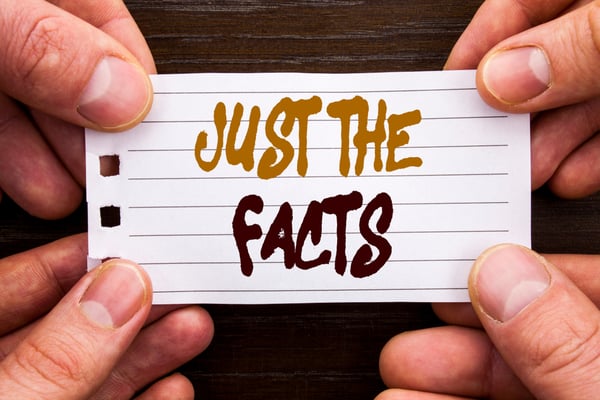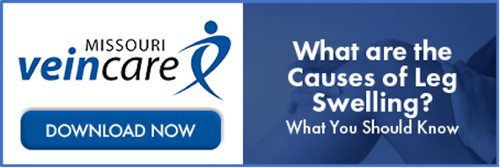12 Misconceptions About Vein Treatment

Originally published 12/16/19. Updated 6/12/24.
Patients confide in our nurses, sharing worries about vein treatment that they're uncomfortable telling the doctor. Having grown up listening to horror stories from older friends or relatives, patients are sometimes afraid of what they’ve heard or believe about vein treatments. Our goal is to share accurate information and clarify misconceptions about vein treatment so that you can feel comfortable and confident in making wise health decisions for yourself. Here are12 common misconceptions about vein treatment that I’d like to clear up:
Misconception #1: Vein Conditions Are Only Experienced by Women
Vein reflux is the result of valves in the veins that are malfunctioning, a condition that, while it does affect slightly more women than men, is certainly not limited to women. In fact, a study about vein disease estimates that as much as 56% of men suffer from vein problems. However, it is true that men are less likely to seek treatment, opting instead to “tough it out” unnecessarily. Men who seek treatment do so because the pain has advanced and made it harder for them to work and enjoy their life. Young adults and children can also experience the effects of vein reflux. In fact, my own experience with leg pain started when I was 15. We see young adults and college students for treatment more often than you may think.
Misconception #2: If I Don't See Visible Veins, I Don't Have a Vein Problem
People tend to discount or ignore the invisible signs of a vein condition and think that, since they don’t have varicose veins or spider veins, they must not have a vein condition. While varicose veins and spider veins do disfigure the legs, there are multiple signs of a vein condition that are not visible. Don’t discount what you’re experiencing just because you can’t see any visible or abnormal veins. Signs like fatigue and sleeplessness along with itching, swelling, and cramps in the legs may all point to an underlying vein condition.
Misconception #3: I Can't Have Vein Treatment if I Had a Knee Replacement or Knee Surgery
Patients express concern that if they’ve had a knee replacement or other knee surgery, they will not qualify for vein treatment. That is not true. In fact, vein treatment prior to knee surgery can make knee surgery safer by reducing the risk of blood clots. Making sure your veins are in good working order prior to knee surgery ensures a better outcome for the surgery. Plus you'll feel better as you recuperate and better be able to start walking or a light exercise program once you are released to be able to do so.
Misconception #4: Vein Treatment Will Also Fix Artery Problems
Vein treatments don't treat artery problems. Arteries carry blood from your heart to the rest of the body, and veins transport it back. Valves in any of the veins can stop working properly, a condition called vein reflux. However, if your arteries aren't working, you might have a condition called Pulmonary Artery Disease (PAD) or artery blockages. In our office, we can perform both a vein ultrasound and an artery ultrasound to check for both conditions.
Misconception #5: Vein Treatment Is Vein Stripping
Vein treatment is NOT vein stripping. Old-fashioned vein stripping is rarely performed today and is no longer the recommended treatment. It required general anesthesia, was done in the hospital, and required a lengthy recovery. Patients did not like it. Fortunately, new techniques have replaced vein stripping. Modern vein treatments are minimally invasive, well-tolerated by most patients, and performed in-clinic with little or no recovery time needed.
Misconception #6: Vein Treatment is Just for Blood Clots
For people who are concerned about blood clots, an ultrasound is an easy way to learn whether or not this is a problem for you. A vein ultrasound monitors how the blood flows, if the vein valves are functioning properly and if you have a blood clot. A vein treatment is focused on improving circulation and not eliminating blood clots, as blood clots are treated with blood thinners.
Misconception #7: Vein Treatment is Only for People Over Age 40
It is surprising that vein conditions begin, for some, in their teen and young adult years. It certainly did for me. Symptoms can arise in anyone at any age, but truth be told, it is more common as we age. The highest likelihood of experiencing vein conditions is based on lifestyle characteristics, and not necessarily age or gender. The cumulative effect of pressure on the legs as we age due to sitting or standing all day and frequent pregnancy cause it to be more common as we age. But unfortunately for some, it starts as early as their teenage years.
Misconception #8: Vein Treatments are Not Covered by Insurance
Many people think that a vein condition is always cosmetic, and therefore not covered by insurance. In actuality, it is a circulation condition that is covered by most insurance plans. Specific details differ according to each plan, and our team will help you sort this out, so that you're clear on what's covered and what - if anything - isn't.
Misconception #9: You Can Treat a Vein Condition with Creams and Topical Applications.
Cams and topical applications are available on the market that claim to be used for treating vein conditions. They may help alleviate some of the pain and swelling associated with a vein condition. However, it's important to note that they will address the symptoms but won’t take care of the underlying problem. A vein condition will worsen with time if left untreated, and there will be a point at which these topical solutions will no longer work.
Misconception #10: Compression Stockings are a Solution
Compression stockings work and will help relieve symptoms. I recommend them to anyone who is struggling with the symptoms of a vein condition. Many insurance companies require a trial period of wearing them before approving treatment. I have had a vein condition my entire adult life and wear them myself on a regular basis. They will improve the symptoms for many people, but they won't eliminate the underlying problem - which will still get worse year after year.
Misconception #11: Just Because My Grandparents or Parents Had a Vein Condition, It Doesn't Mean I Will
There is a genetic link with vein conditions, and if your parents or grandparents suffered from them…then it is highly likely that you will as well. In fact, studies show that if both your parents had a vein condition, there is only a 10% chance you won't have one. If only one parent had a vein condition, there's a 50% chance you won't have a vein condition.
Misconception #12: It's Only a Cosmetic Treatment
A vein condition can and does demonstrate visible symptoms that are ugly and embarrassing for the people who have them. People who have blue spider veins or twisty ropey varicose veins winding down their legs go out of their way to keep them covered. That much is true. However, it’s important to note that vein treatment is not a purely cosmetic treatment. Most people who suffer from a vein condition experience debilitating symptoms that interrupt their life and cause physical and emotional pain. These invisible symptoms are alleviated with treatment. Of the people who did come in for vein treatment for cosmetic reasons, 85% reported that their legs felt better after treatment even though they didn't notice they were hurting before.
These 12 misconceptions are the most common concerns patients share with our nurses. If you’ve had these concerns, you’re not alone. We encourage you to ask questions so that you’re comfortable exploring vein treatment for yourself. My passion is helping people understand that a vein condition is a highly treatable condition and that the symptoms are not always what you think. Many people who have received treatment tell me they wish they’d done so years ago. Understanding these myths helps open the door for people to recognize symptoms they may have previously ignored.
If you're wondering whether or not vein treatment might be a fit, schedule a free screening to find out for sure, or visit our online vein screening options. The pages and links will share photos and more information. Online screenings are available.






